Written by Esha Chhabra with photography by Paige Green
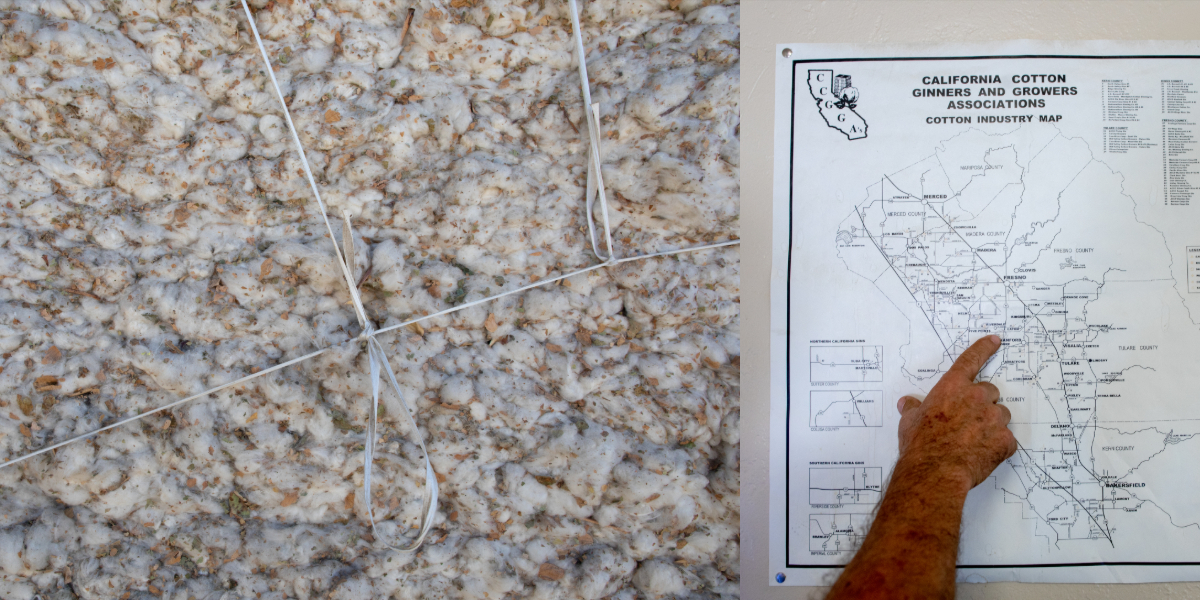
America’s history with cotton is contentious — to say the least. The crop became the backbone of the colonial economy and was the driving force of slavery as an institution and a labor force that historians say is “necessarily imprinted on the DNA of American capitalism.” Cotton also gave America an edge to be self-sufficient: from growing its own fiber to the gins of Eli Whitney to the manufacturing hubs in New England. The crop made America a contender in global cotton production and textiles.
And yet, American-made cotton garments are increasingly hard to find today. We still grow cotton in America; in fact, the US is the third-largest producer after China and India. It’s the manufacturing of textiles that has moved overseas since the 1990s. In 2018, over 14 million of 18 million bales were exported. That said, the US continues to be a producer of the crop — and one that could be grown with responsible farming practices, beginning right here in our fibershed.
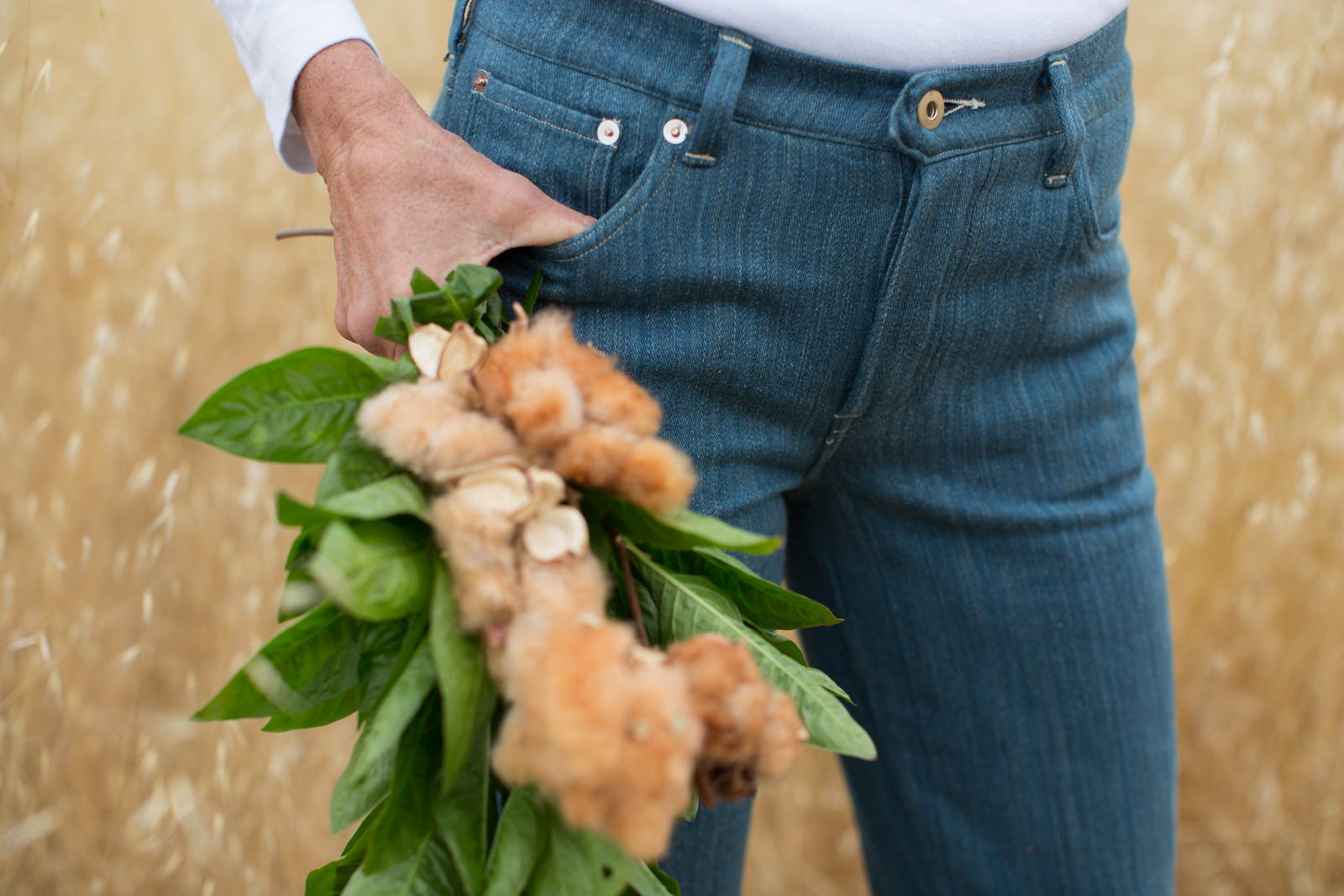
In fact, with more than 200,000 acres of cotton in production in the San Joaquin Valley, this wardrobe staple presents an opportunity and responsibility to rebuild soil health starting at home.
There is ample evidence that some level of cotton production could fit into an ecologically sensitive farming system, yet the future of this crop in our climate relies on re-building organic matter, carbon levels, and dynamic microbial communities in the soil where the cotton is grown. In an effort to trial specific practices that are known to build soil, increase water holding capacity, reduce and eliminate synthetic chemistry for fertilization, vegetation management, and pest pressure, Fibershed has worked over the past year to build relationships with three cotton growers whose farms span the San Joaquin Valley from Kern to Merced County.
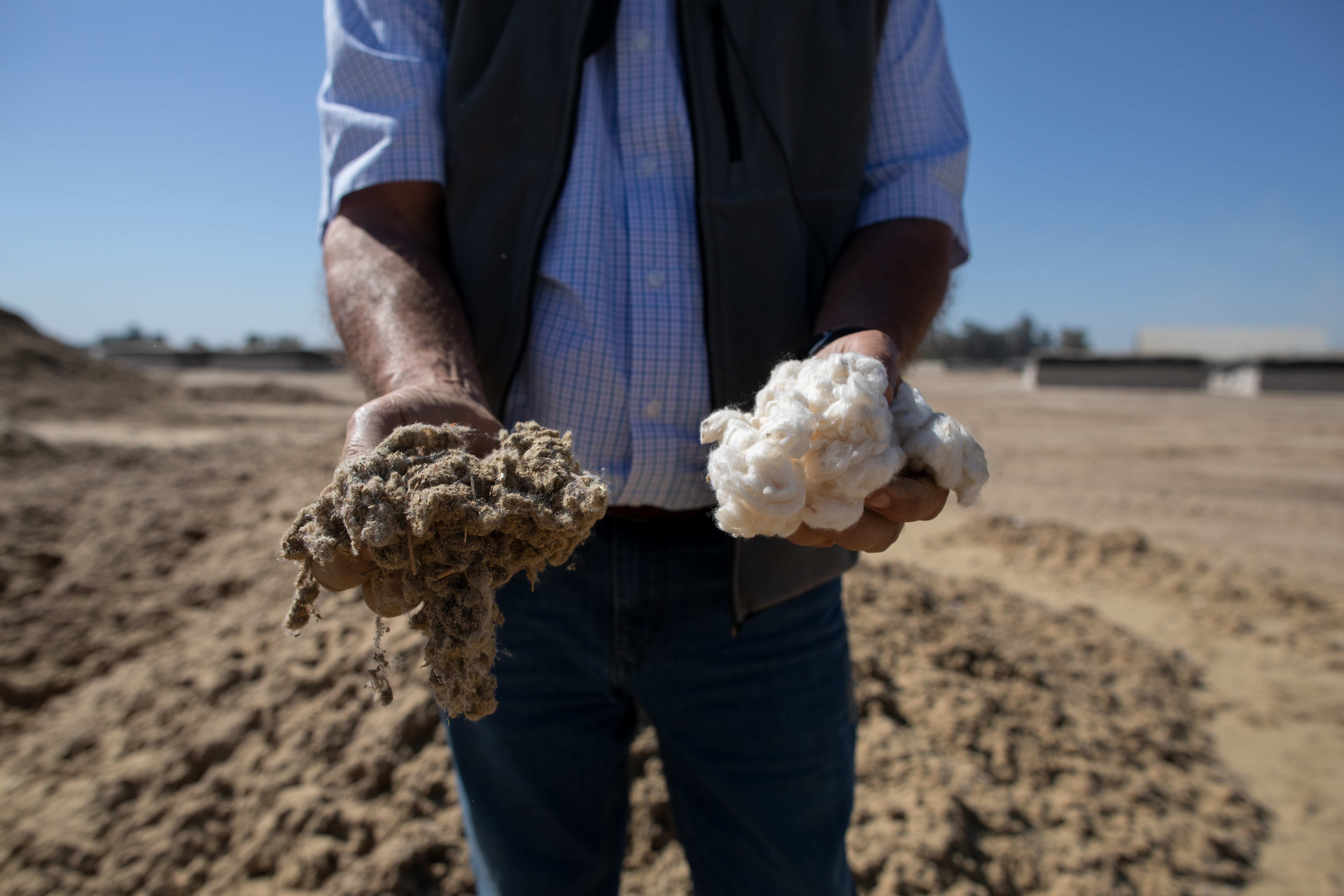
California, which had a thriving cotton industry, has been at the heart of the modern global flux of cotton valuation and commodification. Though cotton has been farmed in its valleys through much of the 20th century, cotton reached its heyday in the ‘50s. In 1951, cotton alone fetched more than $350 million for California growers. Over the following decades, those numbers began to decline. In 1997, the state’s cotton production dropped from 31,000 bales to 14,000, making it less than one percent of the nation’s cotton crop. The focus shifted to Texas where favorable weather conditions enabled cotton growers to proliferate and today, it’s where the bulk of America’s organic cotton is found.
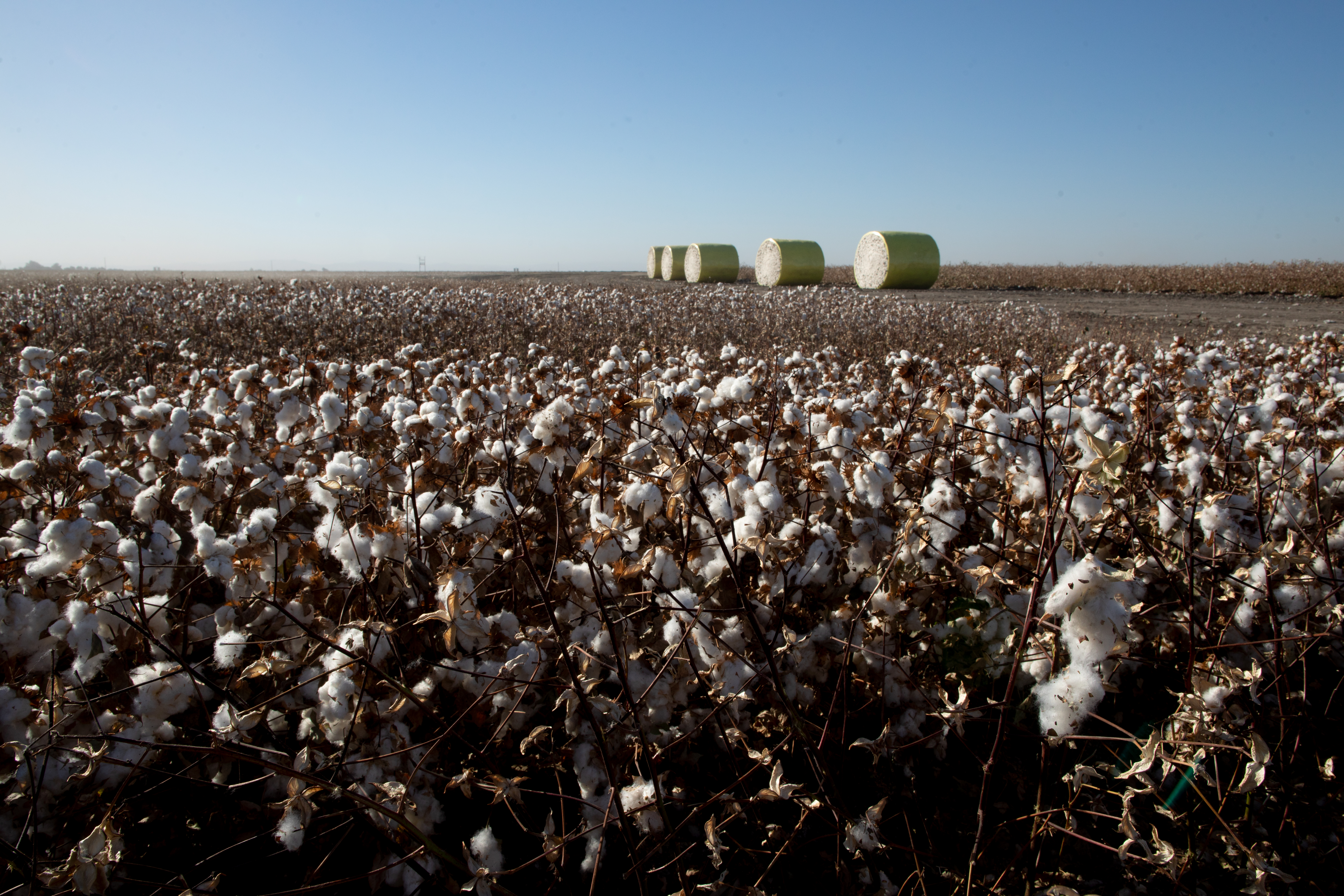
Cotton is often demonized as a crop that takes away precious agricultural land from food crops, or in California’s case, it is cited as a crop that diverts water from those food crops in a region embattled with drought. To give it some context, it’s worth noting that crops such as alfalfa, rice, and almonds, which are grown widely in California’s Central Valley, consume more water than cotton. Just like the vegetables, grains, and berries that travel from field to plate, California cotton utilizes just shy of one million acre-feet of water annually, doled out in a carefully monitored and regulated system. As for the heavy dousing of pesticides, that was a problem in the past, which led organizations such as the Sustainable Cotton Project to emerge. Pesticides and chemical fertilizers have been historically used to keep yields high. But that tide is turning—albeit slowly.
This upcoming series of articles on cotton is designed to provide a window into the world of cotton in the Golden State. Pioneering farmers are bringing back the lost crop and aspiring to do so in a manner that rebuilds the soil, does little damage to the planet, and ensures their health as well. But there remains a challenge: if cotton growers in California even want to grow organically, the incentive to do so is missing.
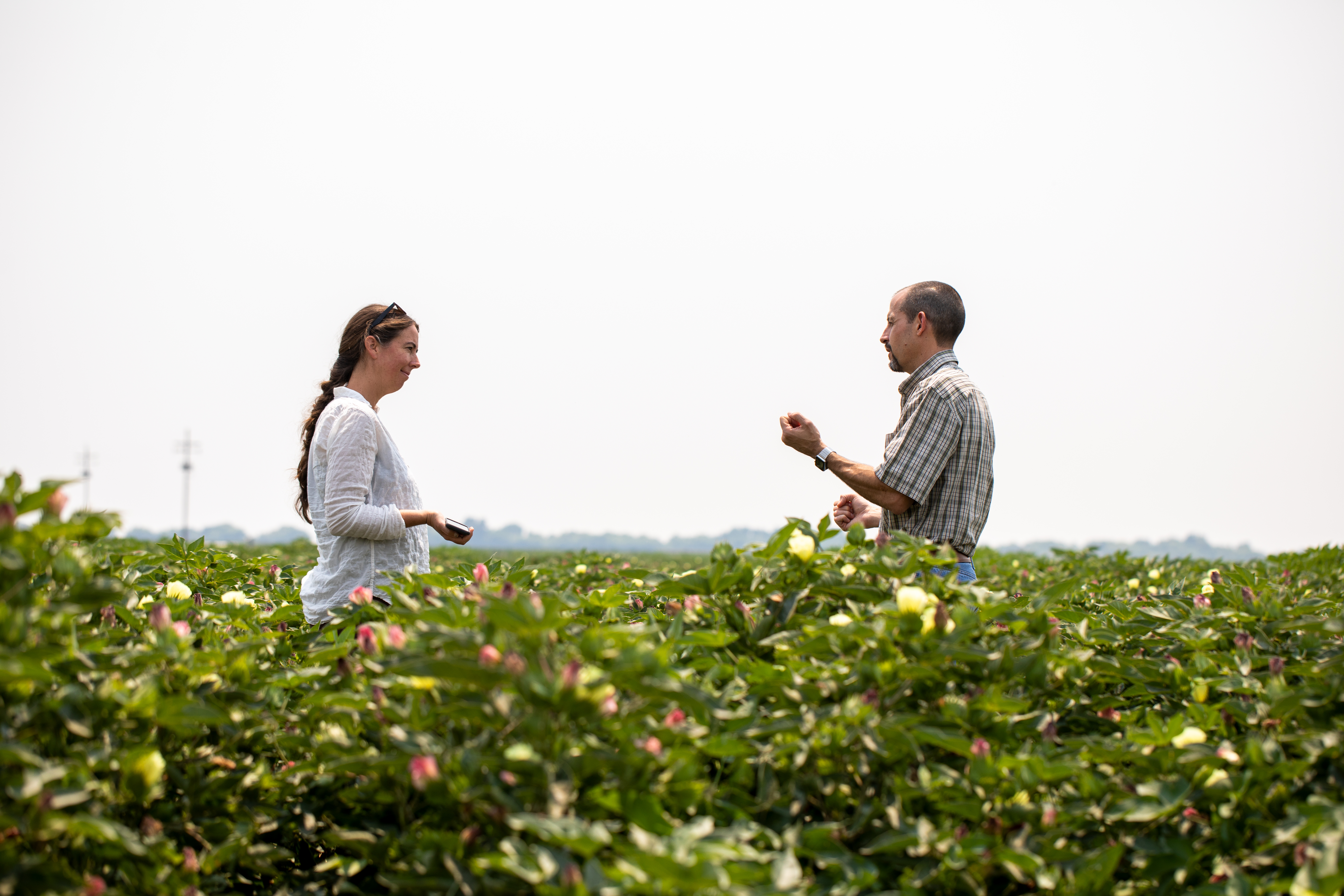
“Farmers will grow what the market dictates,” says Marcia Gibbs is the Sustainable Cotton Project. “We knew that from having organic cotton on the market at $3/lb that no one will buy it.”
Yet the Sustainable Cotton Project has shown that by adding just 15 cents to each pound, we could make it more viable. Farmers were more keen when they saw that they could make a return on the added labor and attention an organic crop would require. Farmers, after all, are as market-driven as any other entrepreneur or business, in an industry with margins as thin as thread: tending to the soil has to be a profitable venture for them.
But, you may ask, are more brands not interested in buying organic cotton, with all this increasing awareness about environmental impact, degradation of soils, and the unknown effects of heavy chemical usage? It certainly seems that we hear more about organic cotton than ever before, and even the rumblings of a “regenerative cotton” label.
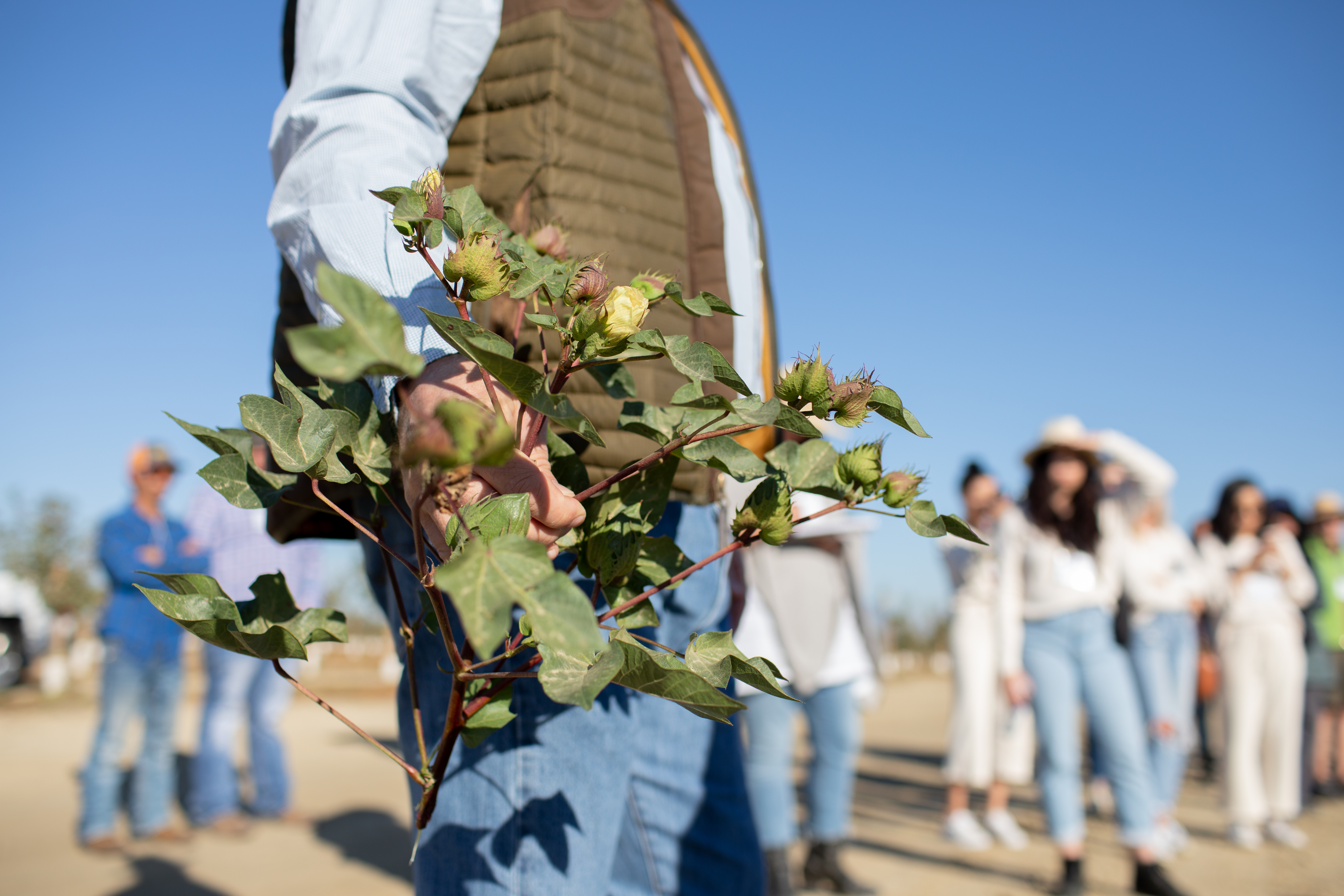
While brands are interested, they too are looking for the most cost-effective product. Lynda Grose, sustainability expert and former designer at Esprit, recalls how brands shifted their supply chains from the US to countries such as Turkey where organic cotton was available at lower price points in the late ‘90s. In an increasingly globalized economy, California cotton farmers were forced to compete with the low labor prices overseas, which led to the demise of organic cotton production in the Central Valley.
However, the issues with organic cotton become even more complicated, Grose explains, because central California cotton growers had historically been heavy-handed with pesticides and chemical fertilizers. So, if brands truly wanted to promote sustainable agriculture, they would have looked to convert these non-organic cotton growers, and decrease chemical usage. Instead, they turned to farms that were already organic by default, in many cases, since farmers could not afford the pesticides in developing countries. Though supporting organic cotton elsewhere, they missed an opportunity to create change at home in the US.
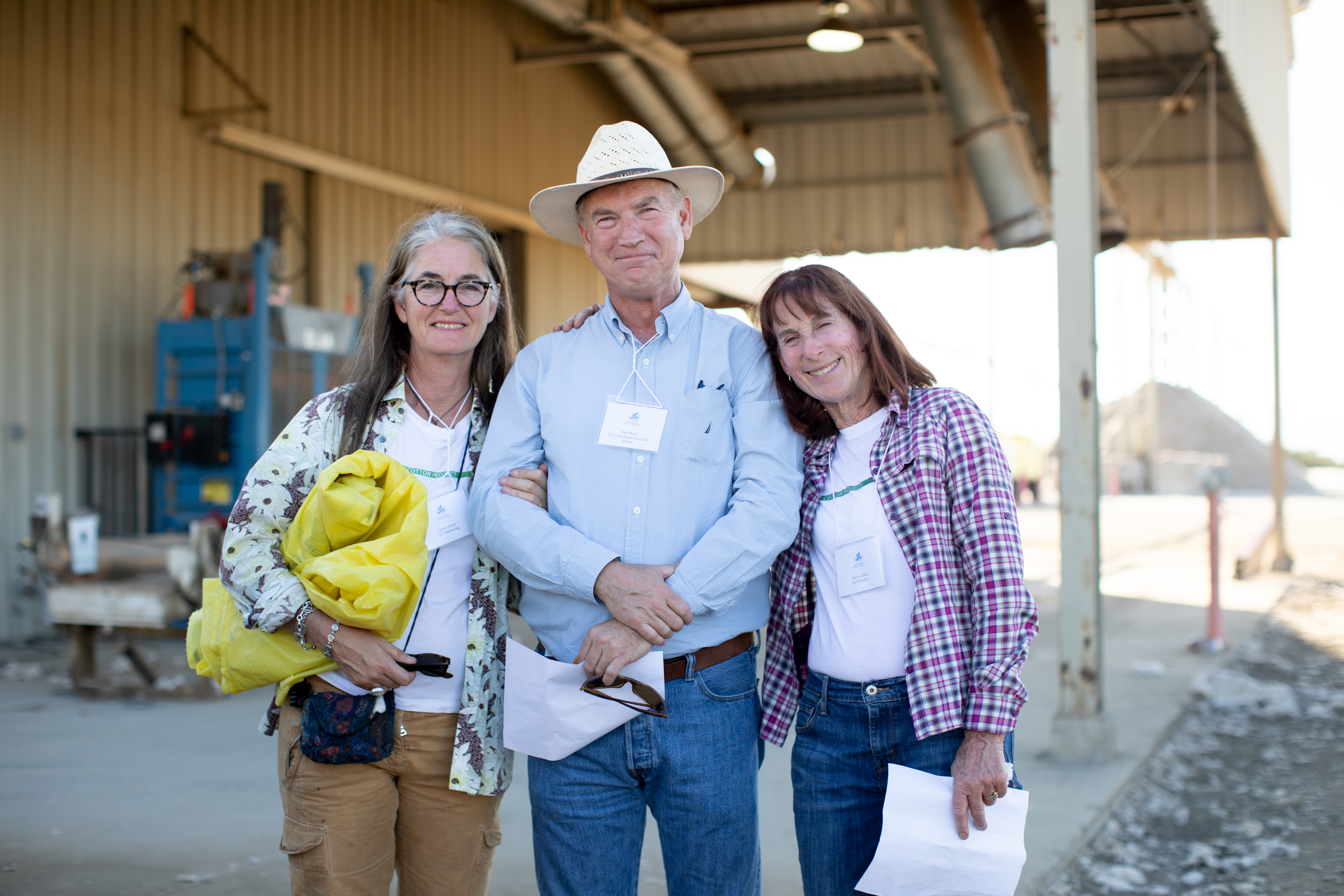
In the 1990s, Grose had been working at Esprit, a company that was founded by Doug Tompkins, who would later go on to start The North Face. Esprit used a lot of cotton for their designs, emphasizing the light, breezy appeal of California fashion. So she concentrated her efforts on understanding the nuances of cotton in this growing global supply chain. To encourage California farmers to grow a less toxic product, she started Cleaner Cotton, an initiative that stripped down the list of pesticides permitted on cotton farms, advocated for soil health, and eliminated the use of genetically modified seeds.
It was not organic. But it was on the path to ameliorating the crop’s impacts on people and planet. Cleaner Cotton banned the use of the 13 most toxic pesticides. They partnered with UC Berkeley to help farmers manage pests without the use of pesticides. As a result, Cleaner Cotton was cutting down chemical usage by fifty to seventy-five percent in California. Given that the state monitors pesticide usage, it was possible to see progress, Grose explains. In fact, California is the only cotton-growing region in the world where this data is monitored and tracked; indeed, California’s program of pesticide use reporting is recognized as the most comprehensive in the world.
But to go entirely organic is a tall order. For now, though Grose notes, “There is no [large scale] organic cotton in California. There is not a real business case. It’s just too expensive.”
Jeff Creque, co-founder of the Marin Carbon Project and a Director at the Carbon Cycle Institute, has a solution that could create another financial incentive for farmers to invest in regenerating ecosystem health: carbon. If farmers can show that their farms are successfully sequestering carbon, they could receive financial support to rebuild soils.
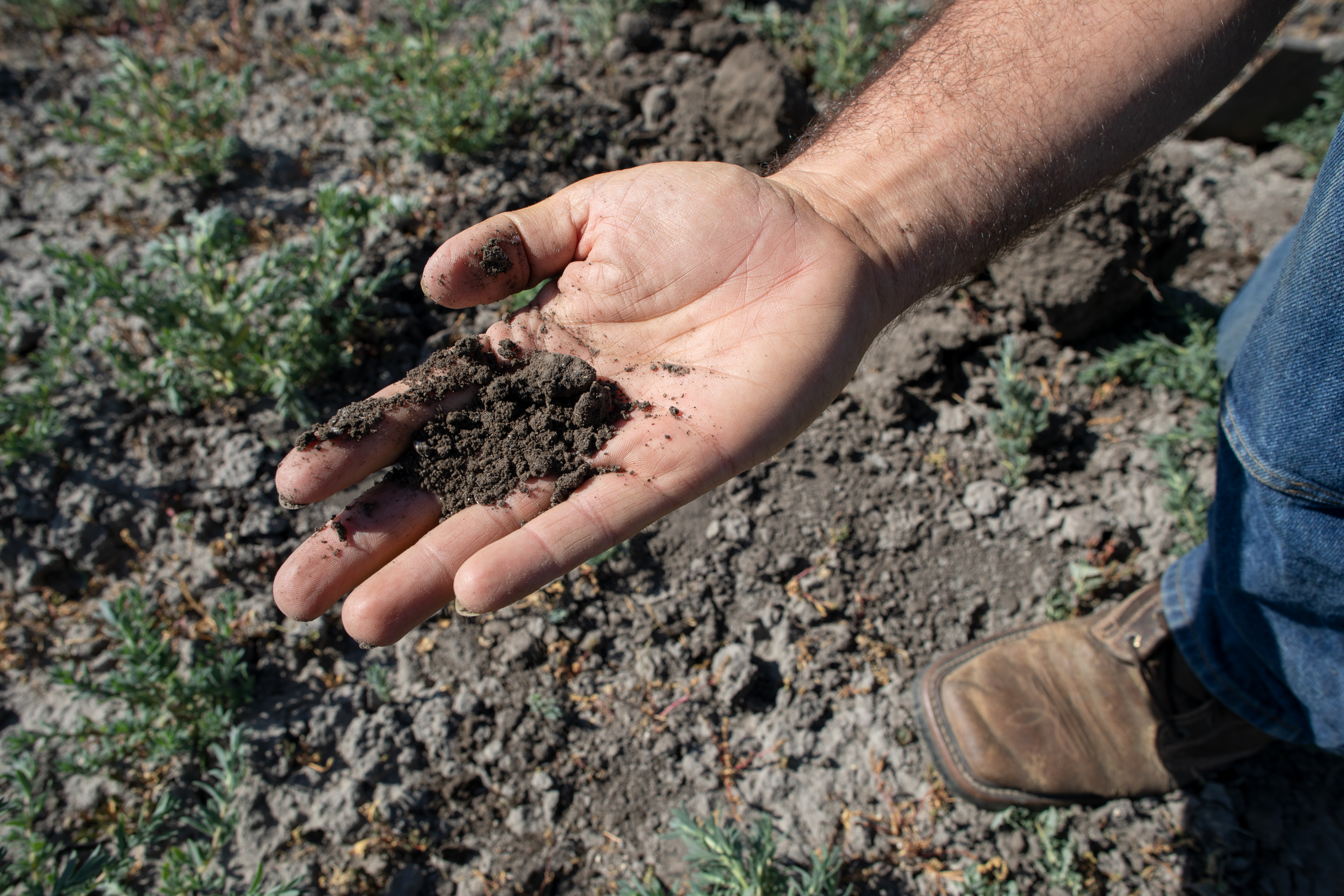
“We have to manage the carbon in our soils,” he says, arguing that agriculture, if practiced with soil health at the forefront, could be a part of the solution to climate change. But to do that, cotton farmers and livestock farmers have to come together.
“We have completely separated our livestock production from our crop production,” he says. “We’ve got these concentrated feeding operations across the Central Valley where we’ve got mountains of manure, and all the problems that go with that, and then we got our crop production over somewhere else and we import fertilizers to sustain those things. I mean, it’s a crazy system. It’s a crazy system, but there’s no reason to say that cotton can’t be grown more sustainably.”
Cotton could be part of a more efficient farming ecosystem. If cotton is rotated with other nitrogen-dense crops, it can be grown for years without depleting the soils. Plus, if fertilized with natural materials, such as manure and compost, cotton crops can also rebuild the organic matter in the soils. And if the soils are healthier, they retain more water, he explains. “Our soils are dealing with less than one percent organic matter. We are basically trying to farm in the desert.”
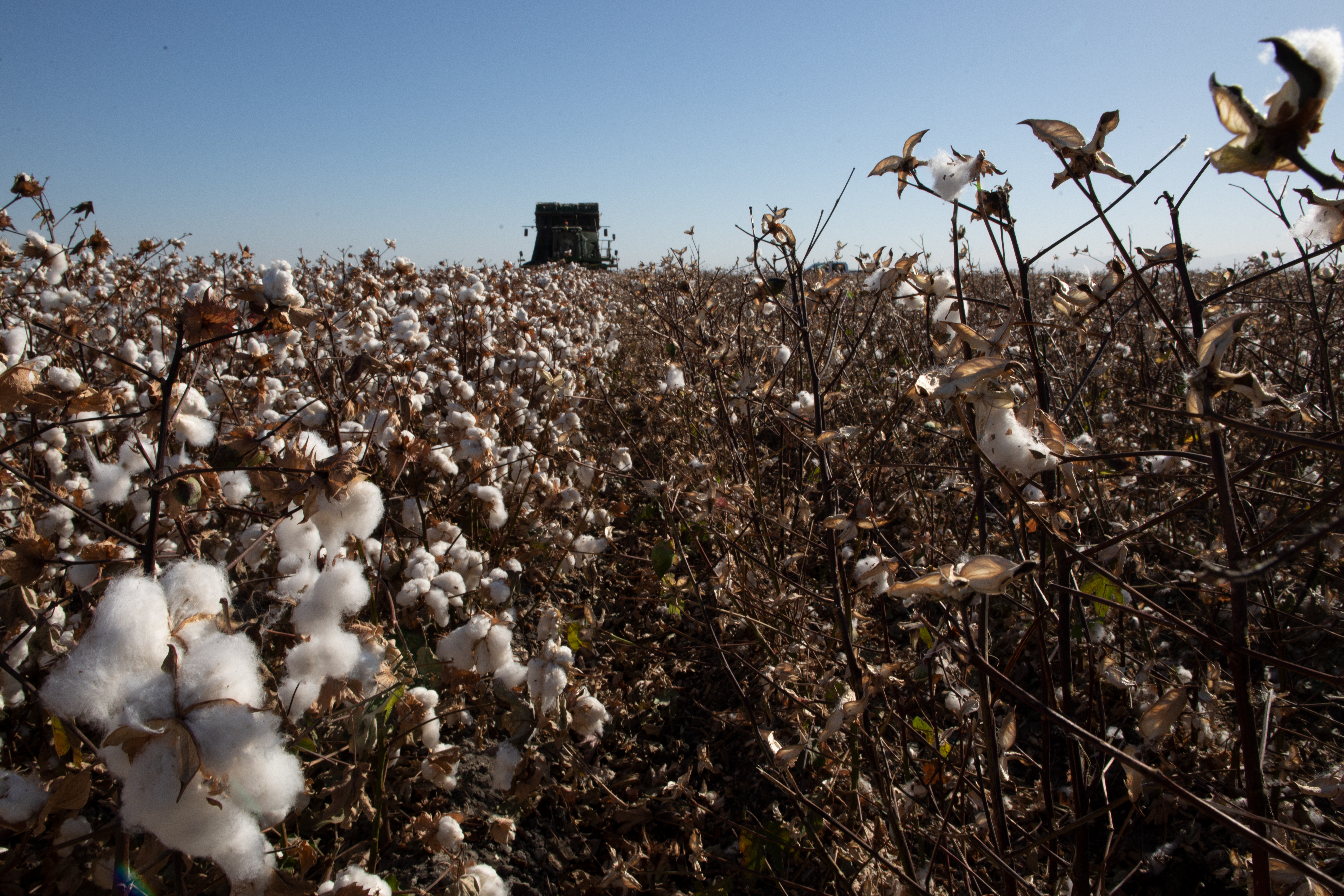
Thus, in a state such as California where rainfall has varied drastically, the soils can hold reserves for dry periods. All this is doable. In fact, it’s already being done by some pioneering farmers. But Creque warns that it comes at a price: “There needs to be an economic recognition from a part of society of the extra work involved do it.”
That’s not to say, he says, pausing, that we’re not already paying for the conventional practices that have been entrenched for decades. “We have 600 square miles of nitrate-polluted groundwater in California’s Central Valley. We’re going to pay to clean it up and it’s going to cost us billions of dollars. So let’s stop causing these problems and start fixing. It’s a pretty simple choice, but the structures in place, the institutional structures in place do not support making that choice. We need a major shift in the way our government and educational institutions think about this problem.”
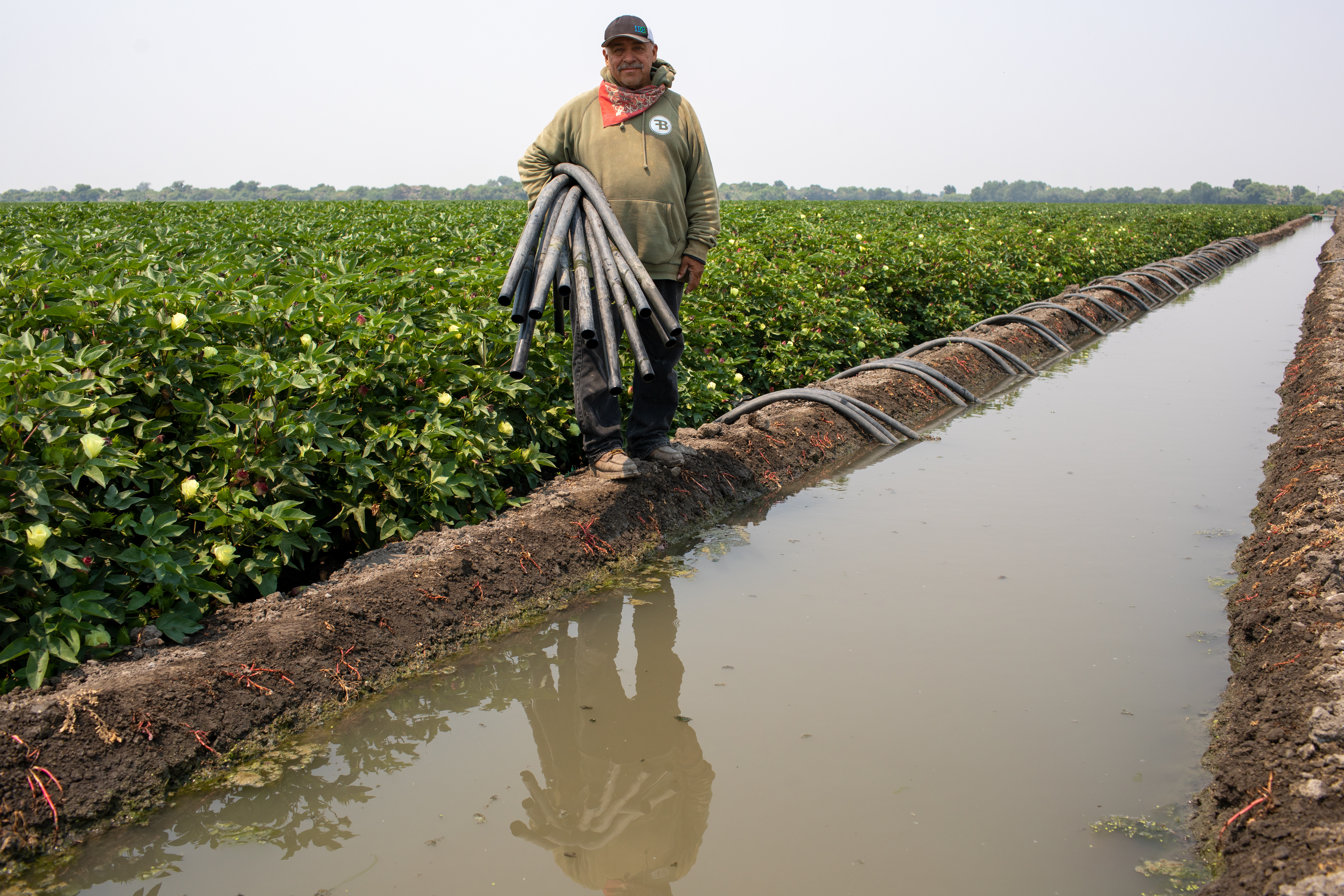
Water is the final critical challenge in cotton farming — seeds, soil, and water. Yet it’s not just the retention of water in healthier soils, and the persistent threat of drought, but a more complex problem in California: the communities that work the farms in the Central Valley, where the cotton has been grown, often do not have access to clean water themselves. Because of the heavy use of pesticides and chemical fertilizers by farmers in the region, communities have to forgo tap water for bottled water — a financial burden and taxing on their health. An estimated 300 public water systems in California have unsafe drinking water, adding up to more than 1 million Californians who are exposed to this tainted water every year, according to the Community Water Center. There is some help on the way: California lawmakers approved $130 million to invest in the water infrastructure of these communities, promising to deliver safe drinking water to agricultural workers. It’s 2019, and California is struggling to provide clean water to those toil daily in the fields.
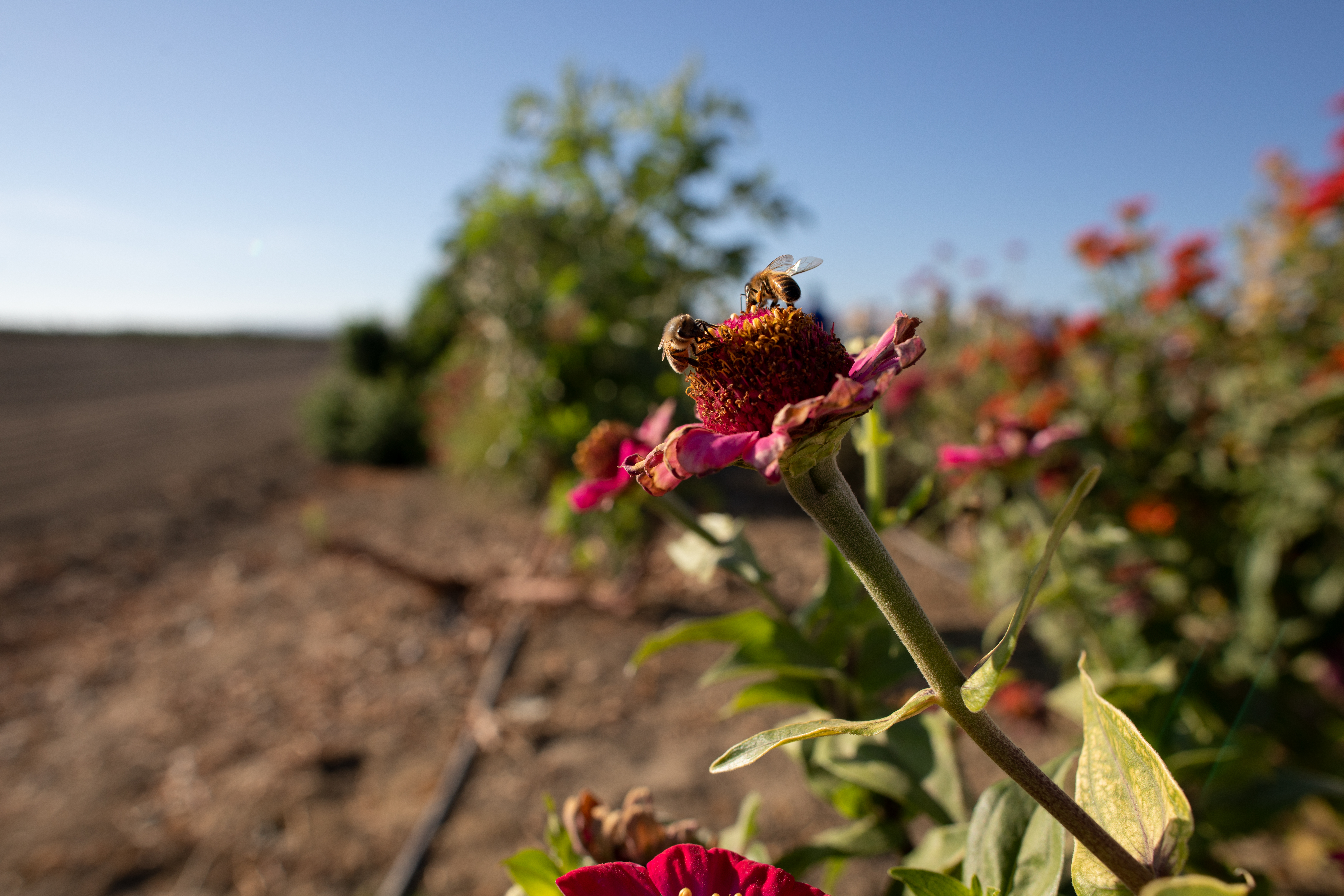
This is why efforts to regenerate the systems supporting cotton are essential — because cotton is part of the broader California agricultural system wherein shifting practices opens pathways for whole systems regeneration. For the past year, and throughout a planting cycle, Fibershed has been visiting cotton growers throughout Northern and Central California in an effort to understand the system as it is. This is an examination formed through proximity and a commitment sealed through mutuality. With cotton present in every wardrobe, produced throughout our region, and part of an economic system employing more than 25,000 directly and more than 100,000 employed indirectly in California alone, we share the responsibility from soil to skin to deconstruct the narratives around this favored fiber and dig deep into what it could look like to restore the soil undergirding this system.
This series on cotton explores the stories of several innovators and creative minds, examining cotton as it is in our home community to understand our collective opportunity to shift practices from soil to soil.
